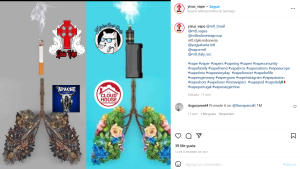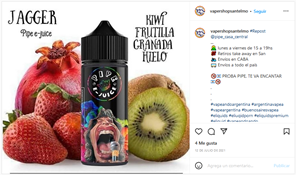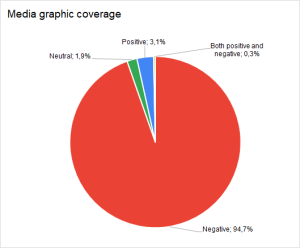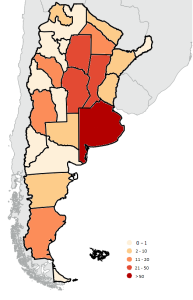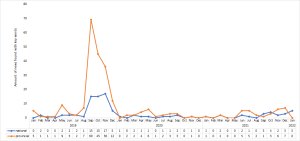Digital strategies of the tobacco industry: how it is convincing us to buy its new products
The tobacco industry does not sleep and constantly reinvents itself: from new supposedly healthy products, to the ways of advertising them and reaching more and different audiences. We tell you in this note what are the main strategies and scapegoats used to convince you that these products are not only healthy, but even ensure a life full of success and luxury.
“Below, we offer a google translate version of the original article in Spanish. This translation may not be accurate but serves as a general presentation of the article. For more accurate information, please switch to the Spanish version of the website. In addition, feel free to directly contact in English the person mentioned at the bottom of this article with regards to this topic”.
NEW PRODUCTS ON SOCIAL NETWORKS
When it comes to tobacco companies, renovation and reinvention are never lacking to maximize their profits, sell new products and attract more and more consumers, mainly children and young people. Faced with this, it is essential to be able to identify the main platforms for disseminating these products and the misleading and false advertising messages.
Based on a survey we carried out on social networks – a great platform for disseminating new tobacco and nicotine products – we identified different techniques and strategies to convince consumers that the new products are attractive and even healthy.
First of all, the tobacco companies try to sell their new products, such as the electronic cigarette, as something innovative, different and even better than the traditional cigarette. Through the use of hashtags such as #Vapearsalvavidas and #Vapearnoesfumar, the tobacco industry seeks to “wash” its traditional image of an unhealthy industry. In this way, the vape is presented as non-toxic or harmful to health, and the World Health Organization and various studies have shown that this is far from being the case.
PUBLICATION POSITIONING THE VAPE AS DAMAGE REDUCED
PUBLICATION RELATED TO FOODS TO IDENTIFY THE FLAVORS
On the other hand, tobacco companies take advantage of the image of famous people and influencers to promote their products and increase the level of their sales. What is the goal of this strategy? Associate the use of electronic cigarettes with success and with hegemonic lifestyles, to convince us that if we buy these products, we can also access a life full of leisure and luxury.
PUBLICATION WITH IMAGES OF CELEBRITIES
Other strategies to strengthen your advertising presence on social networks consist of the use of memes and the launch of promos and raffles. Through these tools, tobacco companies carry out fun and attractive marketing campaigns for social network users, using a familiar, visual and eye-catching language to sell their products.
PUBLICATIONS OF PROMOS AND SWEEPSTAKES
It is urgent that this type of strategies, campaigns and misleading advertising be unmasked, so as not to create or spread the consumption of products made with tobacco and nicotine, which are harmful to health, and which put youth and children at particular risk.
THE NEW PRODUCTS IN GRAPHIC MEDIA AND TV
Although without a doubt the main means of dissemination of these new products are social networks, TV and graphic media escape our clutches. The following graphs, obtained from our survey, show their presence on these platforms.
Percentage of news connotations found in television media coverage.
Percentage of news connotations found in graphic media coverage.
Distribution of news in graphic media according to the provinces where they were published.
Media coverage between 2019 – 2022 found with the selected keywords, by province. The national average is represented by the orange horizontal line (national average= 11).
Evolution over time of the graphic media coverage found with the selected keywords, depending on whether it is national or provincial media.
Evolution over time of television media coverage found with the selected keywords.
More Information
- Don’t let the steam cover your smoke – Fundeps
- Do not smoke the story: the forms changed but the strategies did not – Fundeps
- New tobacco and nicotine products. Available resources and bibliography of interest. – Tobacco Free Kids.
- WHO reports on progress in fighting tobacco epidemic – World Health Organization
Author
Sofía Armando
Contact
Agustina Mozzoni, agustinamozzoni@fundeps.org
This content is financially supported by the International Union Against Tuberculosis and Lung Disease (The Union) on behalf of STOP, a global tobacco industry monitoring initiative. The content is completely independent from an editorial point of view.


